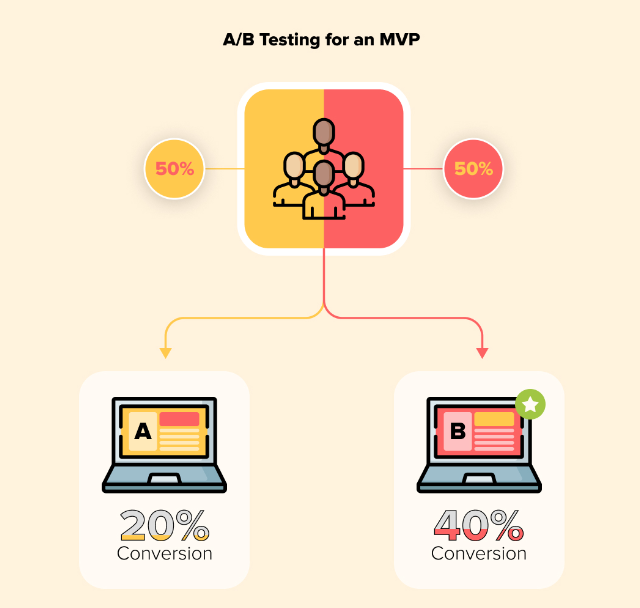In 2025, the blockchain revolution is reshaping industries, and one entrepreneur turned a bold idea into a million-dollar startup in just 18 months. Starting with $10,000 and a vision for decentralized finance, they navigated the crypto boom to create a thriving business. This case study unveils their journey, offering a step-by-step guide for aspiring founders—no tech genius required. Whether you’re a student, coder, or dreamer, discover how to launch your own blockchain venture and ride the 2025 wave to success!

What Is a Blockchain Startup?
A blockchain startup builds products or services using blockchain technology—secure, decentralized ledgers like those powering Bitcoin or Ethereum. These ventures range from decentralized apps (dApps) to NFT marketplaces or tokenized financial platforms. In 2025, blockchain startups are booming, fueled by DeFi growth, NFT adoption, and Web3 trends. This guide follows a founder who launched a DeFi lending platform, turning $10,000 into a million-dollar business.
Why start one? Blockchain offers innovation, scalability, and a chance to disrupt traditional industries with minimal startup costs.
The Founder’s Journey: From Idea to Million-Dollar Startup
In January 2024, the founder, a 28-year-old former fintech analyst, saw untapped potential in DeFi lending. With $10,000 in savings and a laptop, they built a blockchain startup that hit $1 million in revenue by June 2025. Here’s how they did it, step by step.
Step 1: Finding a Winning Idea
The founder began by researching blockchain use cases on platforms like CoinDesk and CoinTelegraph. They identified a gap: small businesses needed decentralized loans without high collateral. Their idea was a DeFi platform offering low-collateral loans using smart contracts on Ethereum.
- Market Research: Studied competitors like Aave and Compound via DeFi Pulse.
- User Needs: Joined Reddit DeFi forums to understand pain points.
- Feasibility: Validated the idea with blockchain developers on Discord.
This research ensured their idea was unique and viable.

Step 2: Learning Blockchain Basics
With no coding background, the founder learned blockchain essentials:
- Smart Contracts: Studied Ethereum’s Solidity via Solidity Docs.
- DeFi Protocols: Explored tutorials on Alchemy.
- Web3: Learned decentralized app development on Dapp University.
They spent two months on free courses, gaining enough knowledge to guide developers without coding themselves.
Step 3: Building a Minimum Viable Product (MVP)
The founder used their $10,000 to create an MVP—a basic DeFi lending platform. They:
Hired Developers
Found freelance Solidity developers on Upwork for $5,000, focusing on smart contract security.
Chose Ethereum
Built on Ethereum for its robust DeFi ecosystem, using Alchemy for blockchain integration.
Tested the MVP
Launched a beta in May 2024, offering 5% interest loans to 50 small businesses via a simple dApp. Feedback from Reddit Ethereum refined the platform.
The MVP cost $8,000, leaving $2,000 for marketing.

Step 4: Securing Funding
To scale, the founder needed capital. They raised $200,000 through:
- Pitch Decks: Created a pitch using Canva, highlighting their MVP’s traction.
- Web3 Investors: Pitched to venture capital firms like Andreessen Horowitz via online events.
- Token Presale: Sold governance tokens on Uniswap, raising $50,000.
By August 2024, funding enabled hiring a full-time team and expanding the platform.
Step 5: Launching and Marketing the Platform
The official launch in October 2024 targeted small businesses globally. Marketing strategies included:
- Social Media: Posted tutorials on X, reaching 10,000 followers.
- Partnerships: Collaborated with DeFi influencers on YouTube.
- Community Building: Hosted AMAs on Discord, growing to 5,000 members.
By December 2024, the platform had 2,000 active users, generating $100,000 in transaction fees.

Step 6: Scaling to a Million Dollars
In 2025, the DeFi market exploded, with Ethereum’s price hitting $8,000 and DeFi TVL soaring. The founder scaled by:
- Adding Features: Introduced staking and cross-chain support using Chainlink.
- Global Expansion: Targeted Asia and Africa via localized marketing on X.
- Security Audits: Partnered with CertiK to ensure smart contract safety.
By June 2025, the platform had 10,000 users and $1 million in annual revenue from 1% loan fees, hitting the million-dollar mark.
Proven Strategies for 2025
The founder’s success hinged on three strategies:
1. Solve a Real Problem
Focus on underserved markets, like small businesses needing affordable loans, validated through community feedback.
2. Leverage Open-Source Tools
Use platforms like Alchemy and Etherscan to build cost-effectively.
3. Build Community Trust
Engage users on X and Discord to foster loyalty and transparency.
These strategies ensured sustainable growth.

Lessons Learned
The founder faced challenges:
- Regulatory Hurdles: Navigated KYC/AML laws with legal help from DLA Piper.
- Team Management: Learned to delegate via online courses on Coursera.
- Market Volatility: Diversified revenue to weather crypto dips.
“Every obstacle was a chance to learn,” they noted.
Tips for Aspiring Founders in 2025
Ready to launch your blockchain startup? Start here:
- Research Deeply: Use CoinDesk to spot market gaps.
- Start Small: Build an MVP with $5,000-$10,000.
- Network: Join Reddit and Discord communities.
- Prioritize Security: Audit code with CertiK.
Begin with a clear vision and scale with user feedback.
Risks of Blockchain Startups
Launching a blockchain startup isn’t risk-free:
- Regulation: Changing crypto laws can disrupt operations.
- Security: Hacks can destroy trust and funds.
- Competition: Established players like Aave dominate DeFi.
Mitigate risks with legal advice, audits, and unique value propositions.

Resources for Learning More
Want to build your startup? Explore these resources:
- Blockchain Basics: Alchemy for developer tools.
- DeFi Insights: DeFi Pulse for market data.
- Startup Guides: Y Combinator Library for entrepreneurship tips.
- Communities: Reddit and Discord for networking.
Knowledge is your startup’s foundation.
Conclusion
Building a million-dollar blockchain startup in 2025 is within reach, as this founder’s DeFi lending platform proves. By solving real problems, leveraging open-source tools, and building community trust, they turned $10,000 into a thriving business. Start with a clear idea, test an MVP, and scale with user feedback to join the blockchain revolution. What’s your startup idea? Share it in the comments below!






















